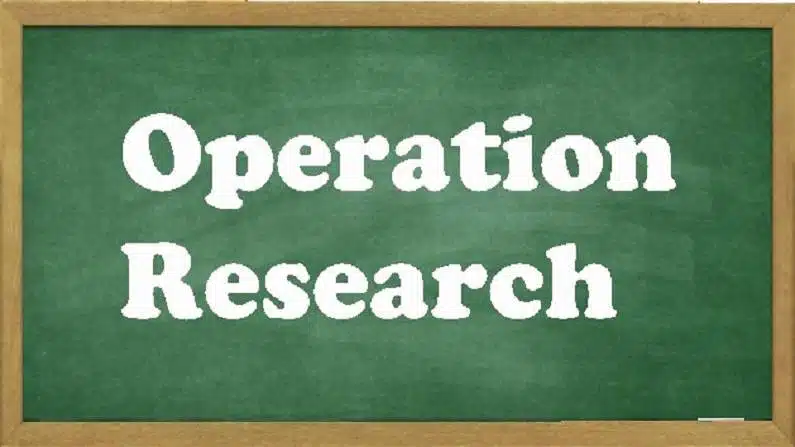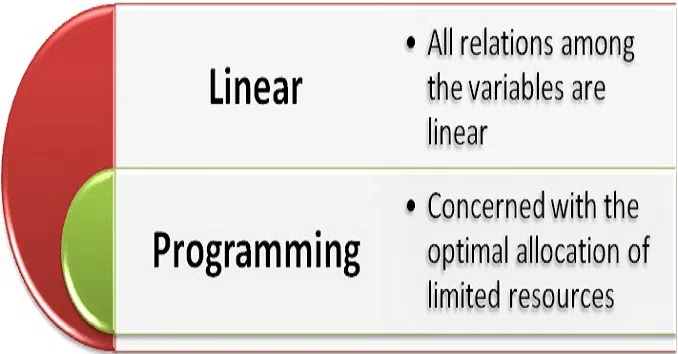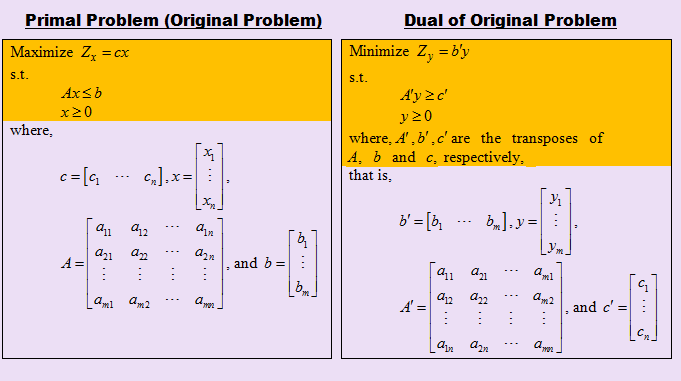
General Methods for Solving ‘Operation Research’ Models:
In operation research, we do not have a single general technique (methods) that solves all mathematical models that arise in practice. Instead, the type and complexity of the mathematical model dictate the nature of the solution method.
The most prominent Operation Research (OR) technique is linear programming. It is designed for models with strict linear objective and constraint functions. Other techniques include integer programming (in which the variables assume integer values), dynamic programming (in which the original model can be decomposed into smaller sub. problems), network programming (in which the problem can be modelled as a network), and nonlinear programming (in which the functions of the model are non. linear).
A peculiarity of most OR techniques is that solutions are not generally obtained in (formula-like) closed forms. Instead, they are determined by algorithms. An algorithm provides fixed computational rules that are applied repetitively to the problem with each repetition (called iteration) moving the solution closer to the optimum.
Some mathematical models may be so complex that it is impossible to solve them by any of the available optimization algorithms. In such cases, it may be necessary to abandon the search for the optimal solution and simply seek a good solution using heuristics or rules of thumb.
Generally, three types of general methods are used for solving operation research models:
1. Analytic Method:
If the OR model is solved by using all the tools of classical mathematics such as differential calculus and finite differences available for this task, then such types of solutions are called analytic solutions. Solutions of various inventory models are obtained by adopting the so-called analytic procedure.
2. Iterative Method:
If classical methods fail because of the complexity of the constraints or of the number of variables, then we use an iterative method. In this procedure, we start with a trial solution and a set of rules for improving it. Then we replace the trial solution by the improved solution, and this process is repeated until either no further improvement is possible or the cost of further calculation cannot be justified.
The iterative method can be divided into three groups:
- After a finite number of repetitions, no further improvement will be possible.
- Although successive iterations improve the solutions, we are only guaranteed the solution as a limit of an infinite process.
- Finally, we include the trial and error method, which, however, is likely to be lengthy, tedious, and costly even if electronic computers are used.
3. The Monte-Carlo Method:
The basis of the so-called Monte-Carlo technique is a random sampling of a variable’s values from the distribution of that variable. Monte-Carlo refers to the use of sampling methods to estimate the value of non-stochastic variables. The following are the main steps of the Monte-Carlo method:
Step 1: In order to have a general idea of the system, we first draw a flow diagram of the system.
Step 2: Then we take correct sample observations to select some suitable model for the system. In this step, we compute the probability distributions for the variables of our interest.
Step 3: We, then, convert the probability distributions to a cumulative distribution function.
Step 4: A sequence of random numbers is now selected with the help of random number tables.
Step 5: Next we determine the sequence of values of variables of interest with the sequence of random numbers obtained in step 4.
Step 6: Finally we construct some standard mathematical functions to the values obtained in step 5.
(Source – Various books of college library)
Copyrighted Material © 2019 - 2024 Prinsli.com - All rights reserved
All content on this website is copyrighted. It is prohibited to copy, publish or distribute the content and images of this website through any website, book, newspaper, software, videos, YouTube Channel or any other medium without written permission. You are not authorized to alter, obscure or remove any proprietary information, copyright or logo from this Website in any way. If any of these rules are violated, it will be strongly protested and legal action will be taken.




Be the first to comment